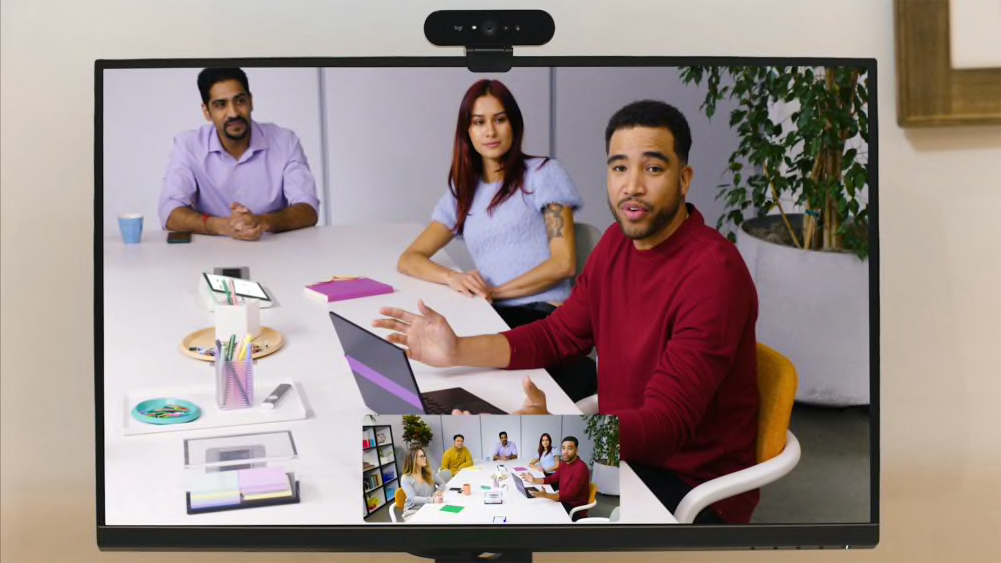Designing and Engineering Hybrid Meeting Equity
Maintaining a unified work culture in a hybrid world

Most leaders are betting big on hybrid work to set their organizations up for success. The problem? While hybrid work is beneficial, it can also be inconsistent and unequal. Left unaddressed, this can lead to a divided work culture.
This is especially true of virtual meetings. When meetings have both in-person and remote participants, remote participants often take a backseat, regardless of their position.
How do we fix this?
Cultivating a better approach to meetings will require a collaborative effort across the organization. IT will be a strategic leader in this effort, as they are tasked with investing in technology that bridges the experience gap between remote and in-person participants.
What’s Wrong With Hybrid Meetings?
Bad habits are hard to shake, and organizational scientists are finding this to be true with corporate meeting culture. Existing challenges with bias, exclusion, and marginalization have been exacerbated by a new factor: proximity.
Proximity bias is when in-person participants gain advantages in the workplace over remote participants, simply due to their physical location.
The dynamics of a hybrid meeting can be heavily influenced by perceived distance, or who is in person versus who is remote. To mitigate this, technology running on meeting devices will play a major role in preventing unfairness from becoming a byproduct of hybrid work. In other words, an equal experience needs to be built into the product itself. This is a pillar of our development process at Logitech.
The 2D vs. 3D Struggle
Experience inequity between in-room and remote participants causes friction during virtual meetings. While those in the conference room are gathered naturally around the table, remote participants are stuck in a tiny box on the wall.
This leads to a number of problems for remote participants:
- It’s harder for them see and be seen, and to hear and be heard, fully
- It’s harder for them to access and influence the conversation
- Without visibility, it’s harder for them to be involved in decision-making
Without full participation, meeting goals are often not met, and the potential and talent of employees goes unharnessed. One poor meeting outcome after another leads to burnout and disengagement for all participants, both remote and in-person.
Solving the Problem
What can technology do to solve this problem? Let’s first look for inspiration outside of the world of work, in areas like entertainment. Think about your favorite movies - what makes them “the whole package?”
It’s not only the great storyline, but the mechanics that are incorporated behind the scenes to make sure the story is told as effectively as possible.
Getting the lighting right, setting and resetting the right camera angles, following the movement and action, and capturing all of the audio and tuning it to the right levels shapes the viewer’s ability to participate in the story.
This primary ability to participate in the experience is the precursor to what follows: engagement.
Similarly, bringing a cinematic experience to the hybrid meeting room can positively impact participation, engagement, and overall effectiveness. Underlying this approach is the philosophy that creating the best overall experience, and not just the best fidelity, is what’s most important.
Improving Hybrid Work is a Team Effort
Problems like inequitable hybrid meetings exist at the intersection of technology, space, and culture. Organizations that take an integrated approach to solving this problem will be better prepared to create an elevated employee experience for everyone, regardless of their location.
Organizations that don’t take this view may find themselves scrambling to play catch-up, as employees gravitate towards places where they can feel equally present and visible from anywhere.
In the second post in this series, we discuss the visual component of designing and engineering meeting equity and why it’s critical for success.
Read the second post: A Better Vision for Hybrid Meeting Equity.
YOU MAY ALSO BE INTERESTED IN

Product Review: Recon Research Evaluates Logitech Rally Bar

Making Office Space Make Sense in a Remote World

Article: Simplifying the Home Office Toolset in Complex Times
Recommended products for you
VIDEO CONFERENCING FOR EVERY SPACE
Find out more about how Logitech video conferencing products perform in a business environment.